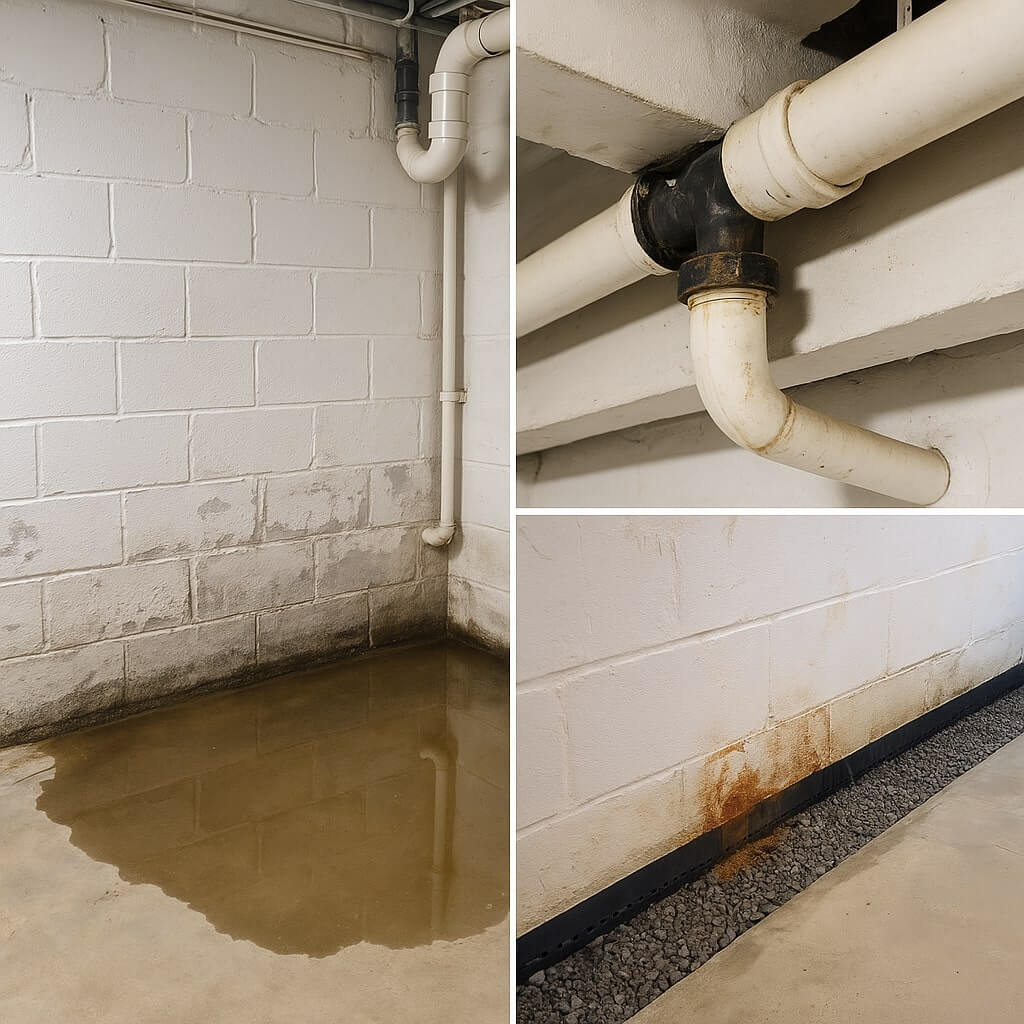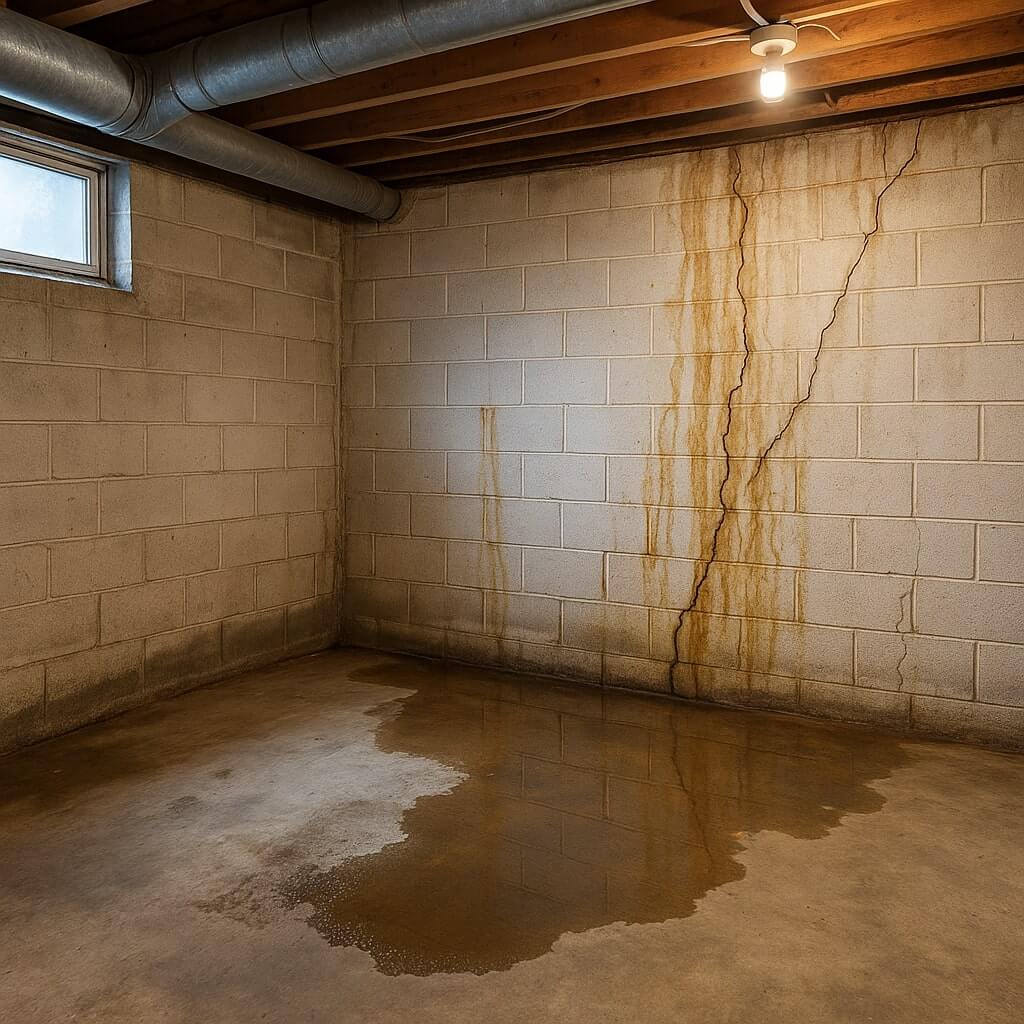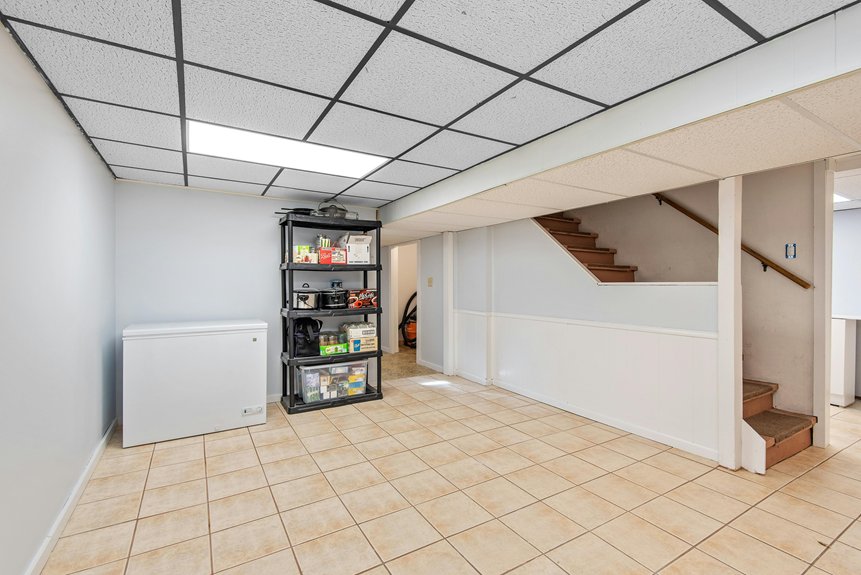When it comes to basement waterproofing in Saginaw, MI, many homeowners make critical errors that can lead to costly repairs. Ignoring proper drainage solutions, relying too much on sealants, and overlooking interior humidity control are common pitfalls. Each mistake not only jeopardizes your home’s integrity but also affects its overall value. Understanding these issues is essential for effective protection, and the solutions may surprise you. Let’s explore these mistakes further.
Key Takeaways
- Ignoring proper drainage solutions can lead to water pooling and increased pressure on foundations, causing cracks and water damage.
- Relying solely on sealants offers only temporary fixes, failing to address underlying waterproofing issues and leading to potential future problems.
- Overlooking interior humidity control fosters mold growth and structural damage, making effective ventilation systems essential for a dry basement.
- Neglecting comprehensive waterproofing strategies increases repair costs and risks health issues from mold, ultimately decreasing property value.
- Regular assessments of drainage and waterproofing systems help identify weaknesses early, promoting proactive measures to safeguard basements.
Ignoring Proper Drainage Solutions
When you overlook proper drainage solutions, you’re setting your basement up for potential water damage and structural issues.
Effective drainage systems are crucial for managing water flow around your property. Without them, rainwater can pool near your foundation, leading to increased hydrostatic pressure. This pressure can cause cracks in walls and floors, allowing moisture intrusion.
Installing interior and exterior drainage solutions, like French drains and sump pumps, helps redirect water away from your basement. Regular maintenance of these systems guarantees they function efficiently, minimizing the risk of water damage.
Don’t underestimate the importance of a well-designed drainage strategy for your home.
Relying Solely on Sealants

Ignoring proper drainage solutions can lead to reliance on sealants as a primary defense against water intrusion, but this approach is often misguided.
While sealants can provide temporary fixes, they’ve significant limitations that you need to evaluate:
- Limited Lifespan: Sealants degrade over time, losing effectiveness as they weather.
- Surface Application: They don’t address underlying issues, like poor drainage or cracks in the foundation.
- Water Pressure: High hydrostatic pressure can breach sealants, leading to eventual leaks.
Instead of depending solely on sealants, invest in extensive waterproofing strategies that tackle the root causes of moisture intrusion.
Overlooking Interior Humidity Control

While many homeowners focus on external waterproofing methods, neglecting interior humidity control can create an environment ripe for mold growth and structural damage.
To combat this, you should invest in effective ventilation systems that promote air circulation and reduce moisture levels. Additionally, installing humidity sensors allows you to monitor moisture levels in real-time, enabling timely interventions.
Keep humidity below 60% to prevent condensation and mold proliferation. Regularly check and maintain your ventilation systems to guarantee they function at their best.
Conclusion
To effectively protect your Saginaw basement, don’t underestimate the importance of a thorough waterproofing strategy. By addressing proper drainage solutions, avoiding reliance on temporary sealants, and managing interior humidity, you can prevent water damage and mold growth. Taking these steps not only safeguards your foundation but also maintains your property’s value. Don’t wait until it’s too late—invest in long-term solutions to secure a dry and healthy basement environment for years to come.




